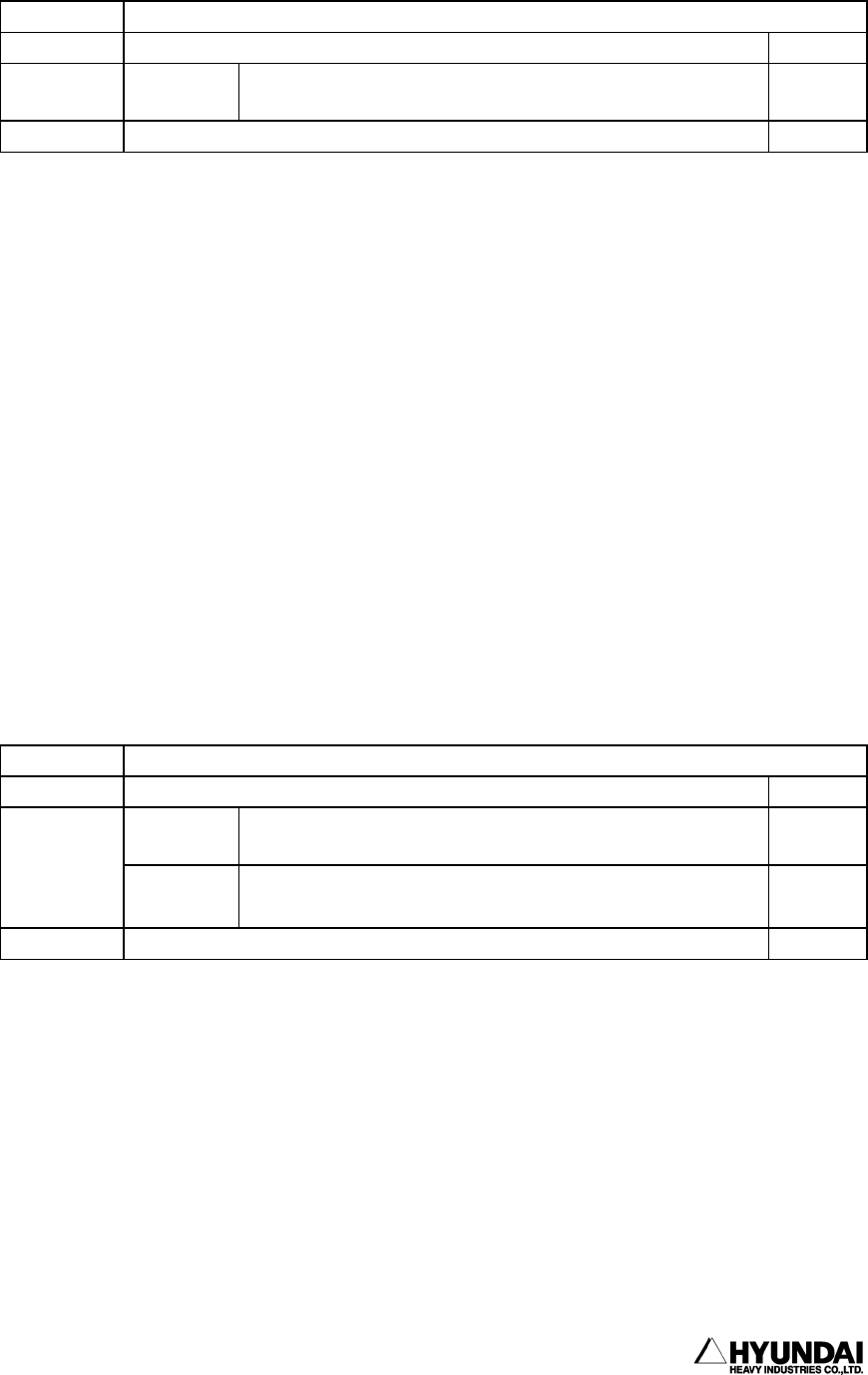
11. Robot Language Explanation
------------------------------------------------------------------------------------------------
----------------------------------------------------------------------------------------
11 - 27
11.3.3 SPOTCND Command
Introduction
Spot welding condition signal is used to change the welding current according the
thickness of the materials or sheets when spot welding.
Welding condition can be freely changed by connecting this signal to the welder. The
welding condition can be to maximum 256 level (0 ∼ 255) .
It is output in Binary type of 8bit (0 ∼ 255) .
Or it can be output in Discrete type (0 ∼ 7) when selecting <Line No> of welding
condition output type (SYSTEM[PF5] → 4.APPLICATION PARAMETER → 1.SPOT&STUD → 1.
WELDING PARAMETER)
This signal is to output as welding condition number that is fixed up in "SYSTEM [PF5]
→ 2. CONTROL PARAMETER → 1. SET UP IN/OUT SIGNAL → 6. ARRAY OUTPUT SIGNAL.
11.3.4 SREQ Command
Introduction
SREQ is a function to request external equipment to send shift amount. The shift
amount is recorded in on line shift register group.
When this function is executed, robot would output data of the format such as SHIFT
※1 CR LF (※1 is register No.) through RS232C port. Then, robot would receive data
of the format such as SHIFT X, Y, Z, θ X, θ Y, θ Z, CR. The input is recorded in the
register ※1. The format of transmit data is ASCII code.
Description Spot Welding Condition (M33)
Syntax SPOTCND <Condition Number>
Parameter
Condition
Number
The condition number output to the welder for welding
current change.
0∼255
example SPOTCND 2
Description Shift Requirement (M51)
Syntax SREQ R=<Register Number>,PT=<Port Number>
Reg. Number Register number for saving the received shift amount. 1∼8
Parameter
Port Number
RS232C port number to be used for shift requirement and
transmission.
1∼1
example SREQ R=1,PT=1


















